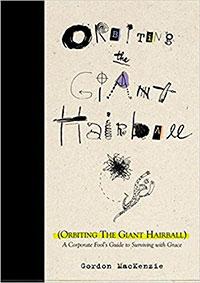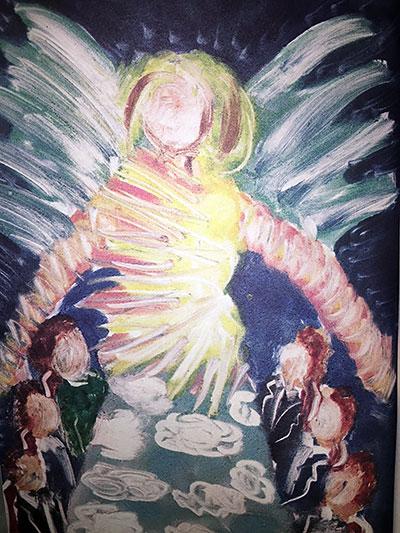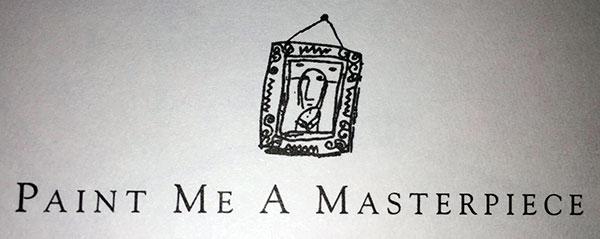Orbiting the Giant Hairball...
Several years ago at a previous job, I became mired in a funk. This funk had to do with the politics of my organization, and with how those politics frequently seemed to force me to work in ways that I did not support. This was not a new situation for me. Many people who strive for continual improvement are frustrated by business as usual, and the lack of a team being open to new ways of doing things.

I talked this issue over with a mentor (my brother-in-law, Kevin), and he said he had just the thing I needed to help me see this situation with a fresh perspective. He suggested a book that had helped him over the years when dealing with just this issue. He recommended Orbiting the Giant Hairball; A Corporate Fool's Guide to Surviving with Grace by Gordon MacKenzie.
Gordon Mackenzie's Hairball
Gordon MacKenzie, author of Orbiting the Giant Hairball, worked in the creative department of Hallmark Cards for 30 years. He compares the organization and processes at Hallmark Cards to a giant hairball. When employees participate in this work environment, they become entangled in the hairball.
The problem with a hairball is despite good ideas and excellent effort, any forward momentum is exhausted by the confusion and inertia of this indecipherable tangle ("Corporate Gravity", MacKenzie's term).
The paradox of the hairball is despite your best efforts at untangling it; one far too often is stuck. This is especially true for people who do not fear change, as the hairball is like quicksand as well. The more you fight, the deeper you sink. Even if you do not fight, you are still stuck. One must escape the hairball.
Orbit, Not Entanglement
However, not all aspects of our organizations (hairballs) are detrimental. Our organizations can provide important benefits such as stability, resources, direction and camaraderie. The key, according to MacKenzie, is to stay close enough to the hairball so you can take advantage of these benefits, but not so close you succumb to its pull and become entangled. Hence the title, and main thrust of the book, Orbiting the Hairball.
Why I Want to Orbit
One of the main satisfactions of my work is the ability to put some of my identity into my job. In fact, one of the greatest motivators for employees in any role is the opportunity to contribute their talents to an effort. But these contributions are too frequently suppressed or hindered by workplaces that don't value ideas from all levels of the organization.
In one of the first chapters, MacKenzie visits a school and asks the kids who of them is an artist? The kindergarteners and first graders are all artists, but as the grade level increases, the number of self-professed artists decreases. It seems that our schools, organizations, and places of employment value conformity, rather than "Creative Genius" (Mackenzies term). Orbiting is about exercising enough creativity to stay in orbit, and to resist the pull of Corporate Gravity.
My Favorite Chapter
Chapter 21 in Orbiting is titled A Conference of Angels. In this story, MacKenzie recounts a sales team conference that he attended to help create a new approach. What he observed was a team going through the motions and arriving at the same tired results. After confronting the meeting coordinator, he got permission to intervene in a novel way. Using gongs and candles he had participants relax in a darkened room, centering themselves internally. Using meditative mantra, attendees cleared their minds and entered an open state with infinite possibility. When Mackenzie "awoke" them back into participation, the result was an outpouring of new and provocative ideas on how to improve sales efforts. His approach unlocked the creativity of the team because it displaced the preconceptions and "Corporate Normalcy" that consistently limits inventive consideration. The lesson learned? Looking at problems in new ways and with new parameters can create amazing possibilities.

Who wouldn't like to attend A Conference of Angels?
Takeaway
Orbiting is not about flying beneath the radar, or about being in some netherworld of mediocrity, floating between anarchy and apathy. Orbiting is about finding a location in the organization that allows for maximum creativity and personal investment by team members while still honoring the organizational imperatives required of us as employees. When employees are allowed to contribute authentically, to the greatest extent possible, within particular circumstances, they are more satisfied and productive. We should all be Orbiting the Giant Hairball.

Many of us see ourselves as a Rembrandt and simply need a canvas to paint on.



1 Comment
Recommended Comments